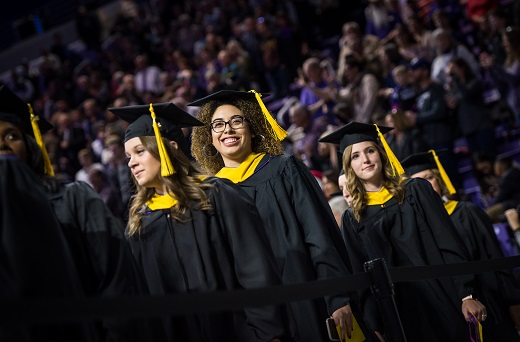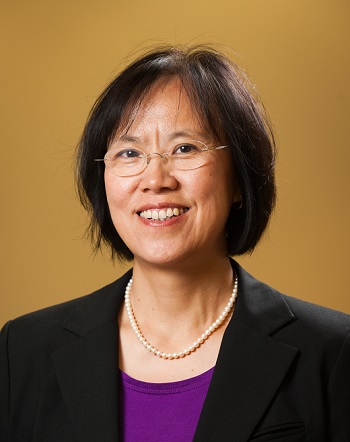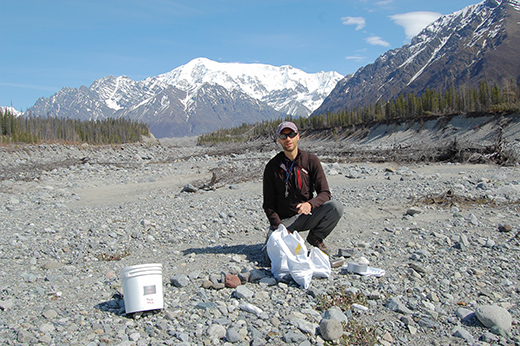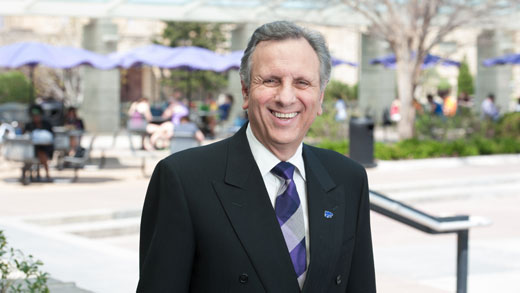01/09/19
K-State Current - January 9, 2019
K-State Current is a weekly news update for the Kansas Board of Regents to apprise the Regents on a few of the many successes and achievements made by K-State faculty, staff and students.
K-State News
Kansas agriculture accounts for $47.9 billion in direct output and is crucial to meeting global food demand. A new project at Kansas State University will help Kansas support global food security and safety while boosting the state's agriculture and food economy.
The Kansas State University Global Food Systems Economic Prosperity Accelerator will be funded by a $745,000 grant through the U.S. Department of Commerce Economic Development Administration, or EDA, 2018 Regional Innovation Strategies program. The awards are designed to create and expand cluster-focused entrepreneurship and technology transfer programs. The Kansas State University project was one of 24 selected from more than 230 proposals to receive funding.
The university will use the grant, matched by other resources, to launch the accelerator in an effort to address the increasingly complex challenges of global food demand and advance the productivity and growth of the Kansas economy.
"This grant will grow the knowledge-based food systems economy of Kansas, produce more university-industry partnerships and create jobs in the region," said U.S. Sen. Jerry Moran in a statement about the grant.
Peter Dorhout, Kansas State University vice president for research, said the accelerator will build on the university's past efforts to provide leadership in global food systems.
"The EDA grant will enable K-State to continue to advance our research, education and outreach in global food systems," Dorhout said. "Our land-grant heritage and agriculture expertise makes K-State uniquely suited to address global food needs while engaging our key stakeholders and enabling economic growth for Kansas."
University partners include the Office of the Vice President for Research, the Kansas State University Institute for Commercialization, or KSU-IC, and the K-State Center for the Advancement of Entrepreneurship. Other area collaborators include Knowledge-based Economic Development, the Manhattan Area Chamber of Commerce, the Kansas City Area Development Council, TechAccel, and the Kansas State University colleges of Agriculture, Veterinary Medicine and Arts and Sciences.
According to Rebecca Robinson, director of economic development and internal program development for KSU-IC, this team has been collaborating for years and already boasts many successes.
"We're honored to achieve this federal recognition of our grassroots effort," Robinson said. "The partnerships we have built in the last decade have raised the profile of K-State and Manhattan as a source of expertise and engagement in global food systems, and we look forward to building on past success."
Through a combination of existing and new projects, Kansas State University and KSU-IC will engage with an inclusive set of university researchers to explore industry collaborations that will ultimately result in the conversion of research, ideas and innovation to commercially viable enterprises and domestically manufactured products.
The grant will fund the Global Food Systems Economic Prosperity Accelerator activities from January 2019 through January 2022. Overall aims will be to accelerate products to the marketplace, encourage transformational innovation, further advance university-industry partnerships in research and commercialization, and encourage entrepreneurship. The project will include working with industry training for faculty, startup mini-grants for students, company outreach, faculty teaming events, technology marketing, company expansion and formation and more.
"The K-State approach to building capacity and promoting strategic partnerships has received national recognition, and federal funding will help us continue to make progress as we forge new partnerships, attract more companies to northeast Kansas and create jobs," Dorhout said.
Kansas State University was named an Innovation and Economic Prosperity University by the Association of Public and Land-grant Universities in summer 2017 for efforts in Talent, Place and Innovation. The master plan and progress on the North Campus Corridor project was named a finalist in the Place category of the University Economic Development Association 2018 Awards of Excellence. The university has increased extramural research funding by 25 percent in the last three fiscal years, including growth in industry partnerships and licensing of global food systems technologies.
Dear K-State Family:
It has been said with some degree of certainty that Vice President for Student Life and Dean of Students Pat Bosco has higher name recognition within the state of Kansas than all but one K-Stater (a certain football coach). Without question he has met more prospective college students and their parents than anyone in Kansas history.
Next summer, after five decades of dedicated service to Kansas State University, Bosco will retire. Bosco came to Kansas State University as an undergraduate from upstate New York, fell in love with the school and never left.
Today he is regarded as an icon and in 2004, the Student Governing Association named the plaza outside the K-State Student Union in his honor. It was the only time in the school’s history that a person still employed at K-State received such recognition.
"Pat Bosco is known to many as the face of the university," President Richard Myers said. "He has encyclopedic knowledge of Kansas high schools and an amazing recall when it comes to current and former students. He is a shining example of how a life dedicated to service to others can transform thousands of lives."
Myers said the university is planning recognition events for Bosco in the spring semester to honor his lifetime of service to the university. Bosco will continue to play a role with the university after his official retirement in July, Myers added.
This dedication to his students and to his university has played an important part in making K-State the institution it is today. In former President Jon Wefald's book "The Transformative Years at Kansas State," he cites Bosco's problem-solving abilities and never give up attitude as key to growing enrollment from 16,500 students to over 20,000 students in just four years.
Under Bosco's leadership, K-State became the No. 1 choice for Kansas high school seniors and remains so today. He is a recognized national leader in student life, enrollment management and student affairs, with his expertise, knowledge and perspectives sought by state and national organizations. Many of the innovations he has introduced have become best practices in higher education. For example, he originated an admissions representatives program that became a model for universities throughout the country.
A true champion of diversity, Bosco has been responsible for recruiting record numbers of multicultural students to K-State. His passion for underrepresented populations reflects a deep belief in the transformative power of education to unlock a person's true potential.
Bosco was student body president and graduated in 1971 with a bachelor’s degree in elementary education. As an undergraduate he joined Delta Sigma Phi fraternity, a connection he maintains today. After graduation, he immediately began his career as director of student activities and would go on to earn his master’s in educational administration from K-State in 1973 and his doctorate in higher education from the University of Nebraska in 1982.
At K-State, Bosco has served under five presidents and held positions of associate vice president for institutional advancement/dean of students, assistant vice president for educational and student services, assistant dean of students and director of student activities.
Bosco originated the all-university open house concept and was one of three founders of the university’s leadership studies program, which has become one of the largest and most distinguished such programs in the nation. Each year, the Staley School of Leadership Studies awards the Pat J. Bosco Outstanding Graduating Senior Award.
Similarly, the K-State women’s basketball team each year presents the Pat J. Bosco Outstanding Student Athlete Award, and the university’s Parents and Family Association has established a scholarship in his honor. Recently the K-State Marching Band came to his office to present him with the 2018 K-State Marching Band Lifetime Loyalty Award.
His dedication to students is legendary. Bosco's emphasis on putting students first ensures they have access to the tools they need to succeed at K-State, whether it be through our first-year experience program K-State First, scholarships and financial assistance, and services such as free tutoring, the Career Center, a food pantry and more. He has long served as an advisor to the student governing association and the Blue Key leadership honorary.
This dedication even extends to students' families with the creation of the K-State Parents and Family Association. Known for the words of wisdom he shares with students, parents and families each summer at orientation and enrollment, he is famous for providing his personal phone number to parents. His holistic view of family led to starting K-State childcare services and the development of the university's state-of-the-art Center for Child Development.
"It is difficult to fully express what Dr. Bosco has meant to our university and we look forward to celebrating his remarkable career," President Myers said. "In the coming semester, please take the opportunity to express thanks to Pat for his lifelong dedication and service to Kansas State University."
K-State Faculty Highlights
National Academy of Inventors names Sun a fellow for her innovations, achievements
The National Academy of Inventors is honoring Xiuzhi "Susan" Sun, university distinguished professor of grain science and industry and ancillary faculty of biological and agricultural engineering at Kansas State University, for her prolific spirit of innovation and the impact of her work.
Sun is one of 148 renowned academic inventors and innovators named as the newest fellows. The academy's more than 1,000 fellows represent more than 250 research universities and government and nonprofit research institutes. The 2018 fellows are named inventors on nearly 4,000 issued U.S. patents.
"I am honored to be named a fellow and thank my collaborators and students through the years for their contributions to my efforts," Sun said. "I feel so blessed to have the opportunities to discover something useful to humanity."
Sun brought her research expertise in bio-based materials engineering and discovery to Kansas State University in 1996. She is named on 15 U.S. patents that have generated more than $385,000 in licensing revenue via the Kansas State University Research Foundation.
"Dr. Sun is one of K-State's most prolific innovators," said Peter Dorhout, vice president for research at Kansas State University. "She works at the intersection of biology, chemistry and physics, and has demonstrated broad research interests and creativity in developing biodegradable plastics, plant-based adhesives and much more — and her work has had many practical applications."
Nine of Sun's patents have been licensed. Two of her most significant patents are for adhesives and coatings made from modified soy proteins and for novel hydrogels for biomedical applications. In 2015, Sun's hydrogel invention, called PepGel, was selected by the U.S. Patent and Trade Office for the Innovation Festival at the Smithsonian National Museum of American History. PepGel offers a medium in which researchers can grow cells in 3D or deliver drugs into the body. Its unique properties allow it to become a liquid under certain conditions then turn back into a gel.
Sun is currently working at the Wake Forest Institute for Regenerative Medicine during her sabbatical. She is hosted by Anthony Atala, professor and institute director, to explore the feasibility of PepGel in 3D bioprinting for organs.
"It is great to have a researcher of Susan's caliber here at the institute," Atala said. "PepGel is a unique hydrogel material and has great potential for 3D bioprinting without needing ultraviolet or chemical cross-linkers."
Sun has attracted about $20 million in grant funding from federal and state agencies and private industry. She co-authored one of the best-selling books in the field of chemical and biological and agricultural engineering, "Bio-based Polymers and Composites," which provided the first systematic description of the green engineering, chemistry and manufacture of bio-based polymers and composites derived from plants. She has authored 190 peer-reviewed journal articles and 14 book chapters, and she has delivered 87 invited seminars and many conference presentations. She also is the founder of two startup companies.
A member of numerous professional societies, Sun is a fellow of the American Society of Agricultural and Biological Engineers, and she received the Lifetime Achievement Award from the Bioenvironmental Polymer Society. Sun has served as associate editor of the Journal of Biobased Materials and Bioenergy since 2006, and she previously was associate editor of the Journal of Polymers and the Environment, Cereal Chemistry, and Transactions of the ASABE. Sun also was recognized as one of the "50 Kansans You Should Know" by Ingram's magazine in 2013, was named one of top scientists in the state's 150-year history by Ad Astra Kansas in 2011, and received the prestigious Higuchi-KU Endowment Research Award in Applied Sciences, also in 2011.
"The importance of Dr. Sun's contributions to her field stems from the fact that she applies fundamental knowledge, obtained from her research, to solve real-world problems and to develop new materials and products derived from biorenewable feedstocks that lessen dependence on petroleum-based chemicals," said Gordon Smith, professor and head of the department of grain science and industry and director of the International Grains Program Institute at Kansas State University.
Fellows must be named inventors on U.S. patents and nominated by their peers for outstanding contributions to innovation in areas such as patents and licensing, innovative discovery and technology, significant impact on society, and support and enhancement of innovation.
The 2018 NAI Fellows will be highlighted with a full-page announcement in the Jan. 25, 2019, issue of The Chronicle of Higher Education and in upcoming issues of Technology & Innovation.
Geologists' study unearths new information on age, activity of Alaska's Wrangell volcanic belt
A new study by a team of geologists that includes Kansas State University's Matthew Brueseke has found that the Wrangell volcanic belt in Alaska's Wrangell-St. Elias National Park and Preserve is older than previously recognized and determined why its volcanic field has been persistently active since it formed about 30 million years ago.
Brueseke, associate professor of geology, and colleagues Jeffrey Benowitz, University of Alaska Fairbanks, and Jeffrey Trop, Bucknell University, are principal investigators on collaborative research grants from the National Science Foundation to study the Wrangell volcanic belt, which stretches just over 300 miles from south-central Alaska to southwestern Yukon Territory in Canada. 
"The origin of the massive Wrangell volcanic belt has been a long-standing mystery as not much is known about how this volcanic arc formed," said Brueseke, lead author of "The Alaska Wrangell Arc: ~30 million years of subduction‐related magmatism along a still active arc‐transform junction," which has been published online by the journal Terra Nova.
A volcanic arc is a location where an oceanic plate slides beneath another plate — the Pacific plate sliding under the continental North American plate in the case of the Wrangell volcanic arc, Brueseke said. Where the two plates collide is called a subduction zone, and the denser plate is pushed down to the earth's mantle at an angle. Subduction zones are characterized by widespread and hazardous volcanoes and damaging earthquakes. Subduction zones are also places where continental crust essentially forms, which is the layer of igneous, sedimentary and metamorphic rock that forms the continents.
The researchers collected a variety of rock samples in remote sections of the national park — some places only accessible by light planes that can land in extremely rocky places — and studied them under microscopes back at their universities. Some samples were pulverized into a powder that was sent to labs that evaluate element and isotope concentrations to determine what melted to form the rock. Radiometric dating also helped the researchers piece together the history of the Wrangell volcanic field, including frequency of eruptions, relative ages of its different volcanoes, and the relationship between volcano formation and plate movements.
The geologists' study produced new geochemical and geochronological data that covers the entirety of the volcanic arc's formation. Coupled with data from prior studies, the team was able to determine the age of the volcanic belt.
"These new data helped demonstrate that the Wrangell volcanic belt magmatism initiated at least approximately 30 million years ago, which is several million years earlier than previously recognized," Brueseke said.
The Wrangell volcanic belt also is home to some of the largest — by height and volume — volcanoes on Earth, including at least two that are historically active and considered hazardous by the U.S. Geological Survey, Brueseke said. The volcanoes have not had a major eruption of lava and ash this century, but have continuously released steam and small ash plumes since their formation.
This continuous activity is unusual, Brueseke said, as a subduction-related volcanic belt usually has long periods of no volcanic activity.
The geologists determined that location and geometry have a lot to do with the continuous activity and size of the volcanoes.
"The location of the volcanic arc is above the edge of a subducting plate that is subducting at a low angle," Brueseke said. "The volcanoes are exceptionally large due to fluid generation from the low-angle plate, the slab-edge upwelling and crustal-scale faults acting as magma conduits."
All that creates an environment that allows for increased volumes of magma, which can then move up through the crust along the faults and possibly erupt. More faults also equal more pathways for the magma. Because the volcanoes are so large, a major eruption could affect air traffic and would likely cause environmental changes, Brueseke said.
Two former Kansas State University graduate students in geology were involved in the research and are co-authors on the Terra Nova paper: Beth Morter, a December 2017 master's graduate, and Sam Berkelhammer, an August 2017 master's graduate. Other study authors include Kailyn Davis and Paul Layer, both with the Geophysical Institute at the University of Alaska Fairbanks.
Three Kansas State University undergraduate students — Maridee Weber, senior in food science and industry with a minor in geology, Shawnee; Victoria Fitzgerald, now a master's student in geology, Hoover, Alabama; and Ryan Keast, a May 2016 bachelor's graduate in geology — also were involved with the study and have contributed and/or co-authored a number abstracts presented at Geological Society of America conferences.
K-State Student News
K-State computer science team cited by Android Security Awards Program
A team of computer science graduate students at Kansas State University, led by assistant professor Venkatesh-Prasad Ranganath in the Secure-It-I research group, has identified a high-security bug in the Android system. As a result, the group has been awarded $2,500 from the Android Security Awards Program.
With increasing interest in app security as well as overall security in software engineering, Joydeep Mitra, doctoral student, wanted to devise a methodology to build secure mobile apps by identifying security vulnerabilities that could be prevented by such a methodology.
In summer 2017, under the direction of Ranganath, Mitra created Ghera, an open repository of benchmarks that capture known Android app vulnerabilities. Starting from an initial set of 25 benchmarks, with contributions from fellow graduate students Aditya Narkar and Nasik Nafi, and computer science alumna Catherine Mansfield, Ghera has grown to catalog 55 known Android app vulnerabilities.
In creating one of the benchmarks, Mitra found that a feature of the Android framework, which caused a known vulnerability, was also used by a core Android component incorporated by many apps to provide access to data. The Ghera team decided to report this issue to the Android Security Team for further examination.
After examining the report, the Android Security Team acknowledged it as a high-severity bug. The team from K-State participated in a coordinated disclosure with the Android team. Approximately 90 days after the issue had been reported, the Android Security Team released a fix for the issue and presented the K-State research group with a monetary reward.
"While we were glad to have made Android a little more secure and to have received the monetary reward, we were really happy to see Ghera having a small and unexpected, yet important, impact," Ranganath said.
"This was our first time to report a security issue to Android as well as participate in a coordinated disclosure, thus affording us firsthand experience in how these activities transpire in the real world. In short, it was a great learning experience on many fronts."
